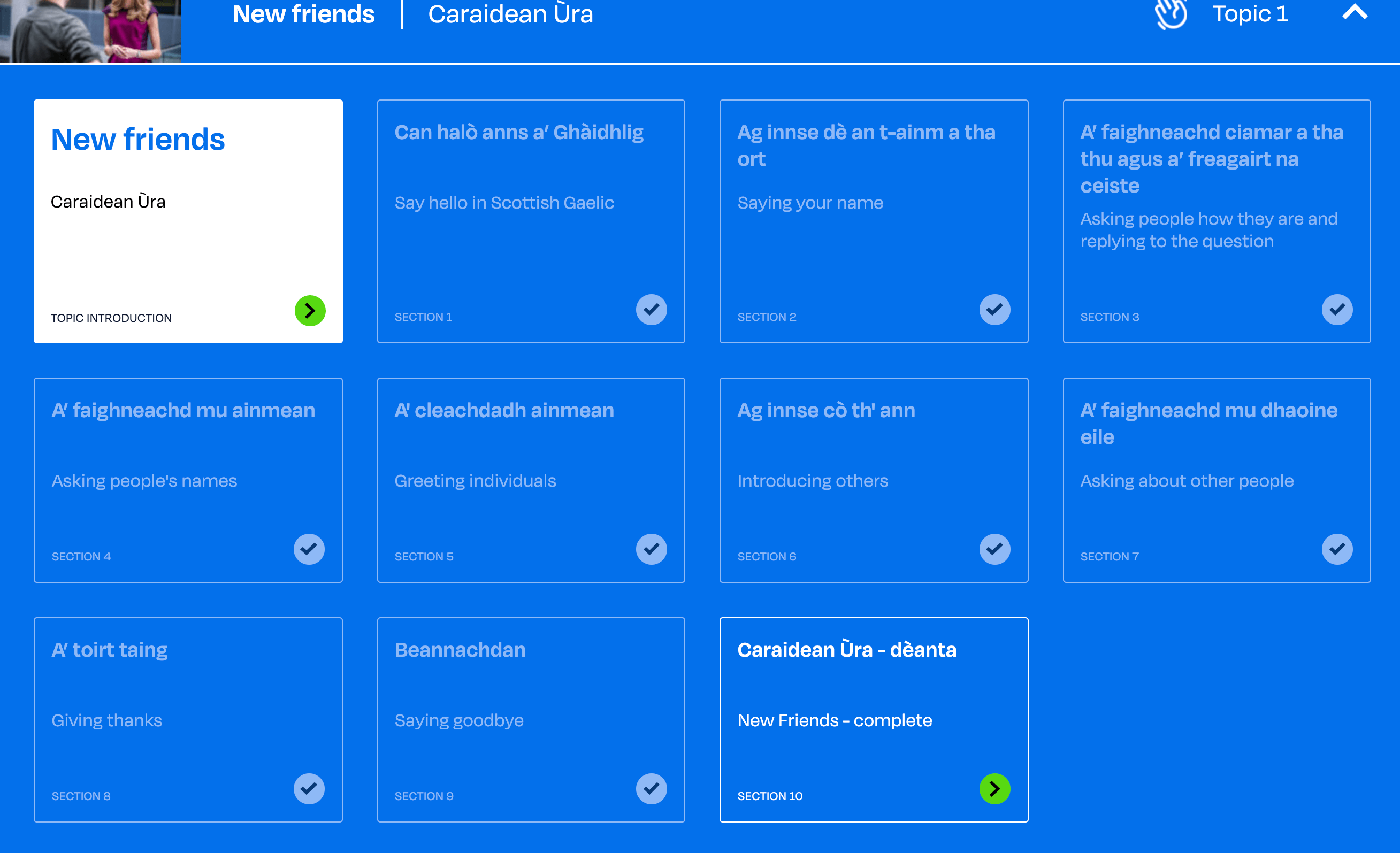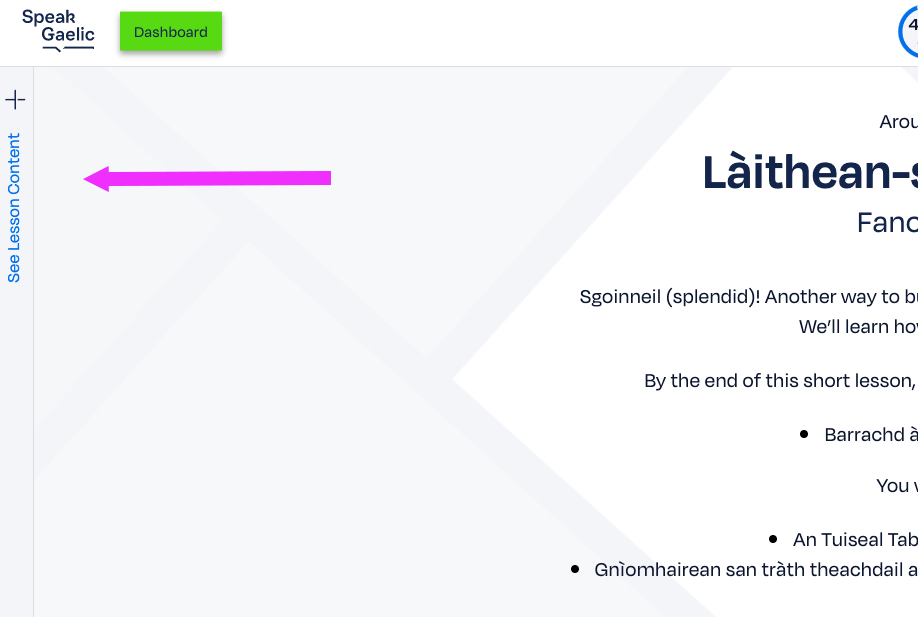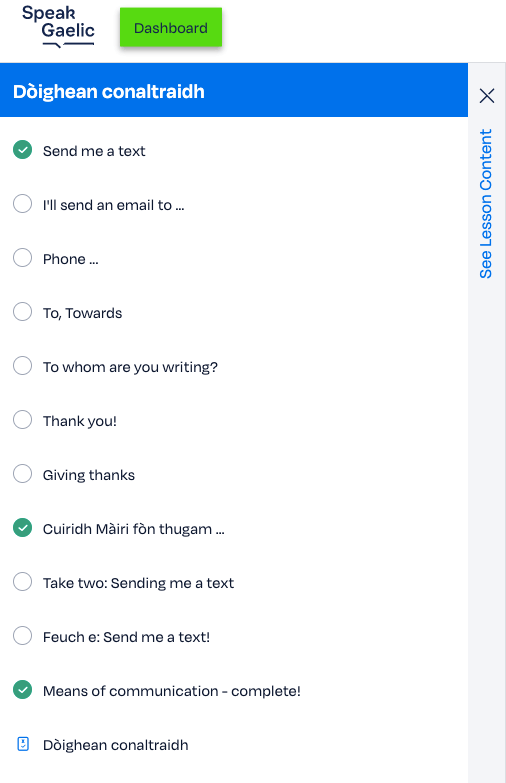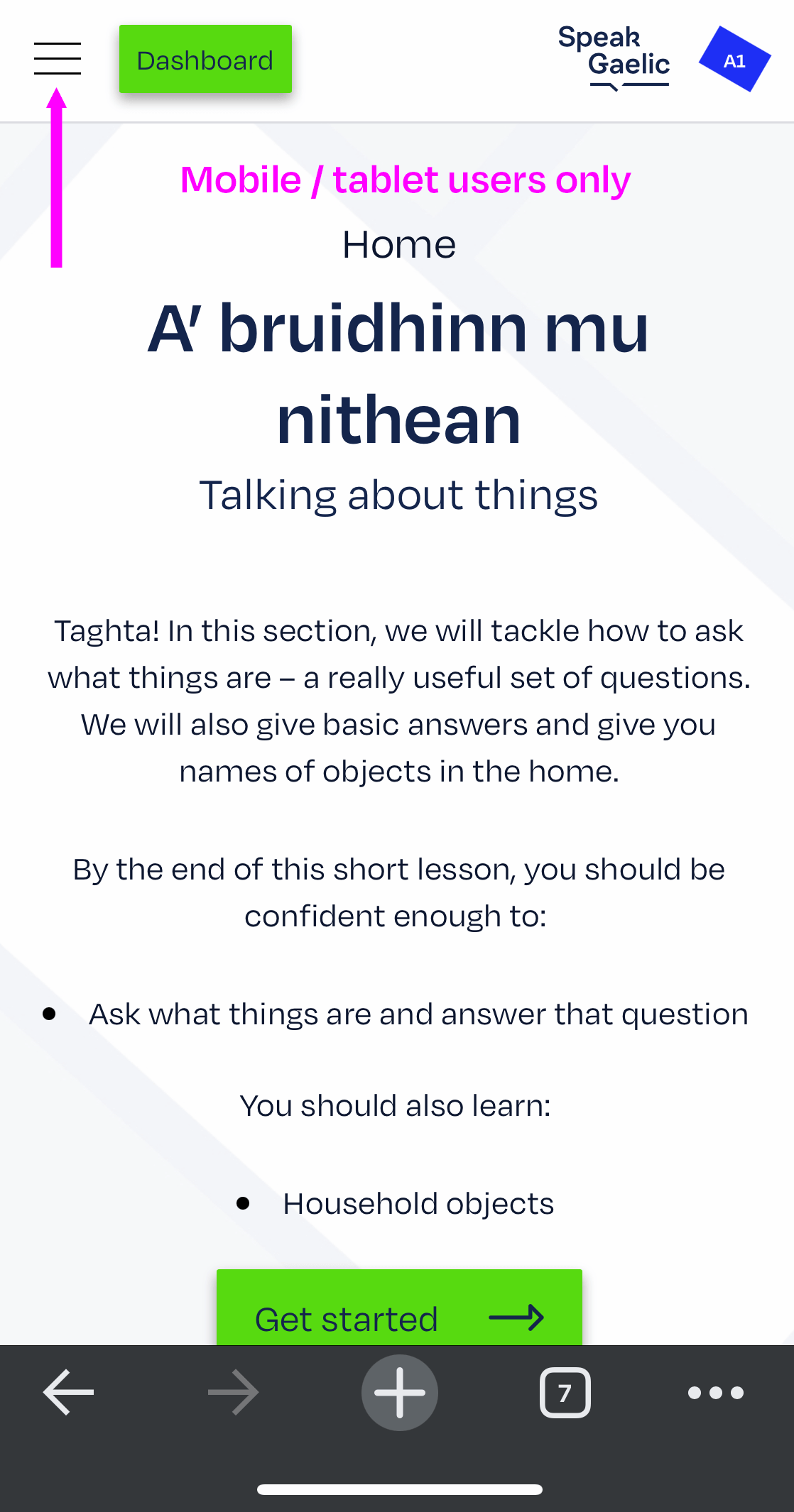Ciamar a thuirt thu sin?
How did you say that?
To ask questions such as cuin(e)? (when?), ciamar? (how?), càit(e)? (where?) with irregular past tense verbs, we need to remember the two parts of each verb:
- the positive statement or answer: the independent form and
- the question, negative question and negative statement or answer: the dependent form.
Let’s look at dèan (make/do) in the past tense. The question words which go with the independent form are:
Ciamar
How
Cò
Who
Dè
What
Cuin(e)
When
Cia mheud
How many
Càit(e) (where) behaves differently by using the dependent form:
| RINN | AN DO RINN |
| Ciamar a rinn? | Càit an do rinn? |
| Cò rinn? | |
| Dè rinn? | |
| Cuin a rinn? | |
| Cia mheud a rinn? |
You’ll be pleased to know that this pattern works for all verbs, regular and irregular. Let’s look at two more examples, featuring rach (go) and faic (see)
| CHAIDH | AN DEACH |
| Ciamar a chaidh? | Càit an deach? |
| Cò a chaidh? | |
| Dè a chaidh? | |
| Cuin a chaidh? | |
| Cia mheud a chaidh? |
| CHUNNAIC | AM FACA |
| Ciamar a chunnaic? | Càit am faca? |
| Cò chunnaic? | |
| Dè chunnaic? | |
| Cuin a chunnaic? | |
| Cia mheud a chunnaic? |




